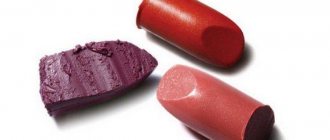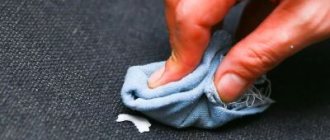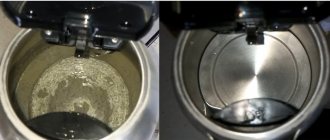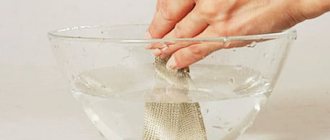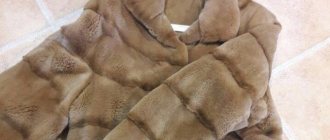Everyone has heard about brass: some people have ancient relics from their great-grandmothers at home, while others are fond of collecting beautiful antique items. The history of brass began before our era, which speaks of its usefulness and necessity for humanity. Then, in ancient times, brass was an alloy of copper with galmay (zinc carbonate). In Ancient Rome, this metal was called “golden copper” because of its similarity to gold; Coins were minted from brass: sesterces and duponies.
In addition to the nickname “golden copper”, brass was also called the “eternal” metal. This is explained by a number of unique features and technical properties that it possesses, as well as a wide scope of its use. But brass became what it is now in the 18th century thanks to James Emerson. It was he who, by combining copper with the metal zinc , officially obtained this alloy.
The “eternal” metal is similar to bronze and has similar technical properties and characteristics:
- resistance to long-term friction;
- melting fluidity;
- corrosion resistance.
Preparing for cleaning
The preparatory process when cleaning brass from oxide at home allows you to avoid serious problems in the future. The features of this stage are the following:
- To begin with, it is recommended to determine whether the alloy consists only of brass, or whether the composition includes other materials. As a rule, a magnet is used for this, since it is attracted to such an alloy.
- Cleaning brass at home begins with assessing the cost of the product and determining its age. Experts do not recommend treating antique items at home, as patina accumulates on it. This layer protects the alloy from various negative factors. An exception is the case when brass loses its attractiveness due to its roughness.
- Before actually carrying out the work, you should wash the treated area from various contaminants using a regular detergent or soap solution. It is recommended to immerse a brass item for 20 minutes, after which mechanical treatment is carried out using a brush. In most cases, this is quite enough for high-quality preparation of the workpiece.
Brass before and after cleaning from oxide
After completing the preparation of brass for cleaning at home, you can begin to carry out such work directly.
For this purpose, a variety of substances and technologies can be used, all of them are characterized by their own specific characteristics.
Chemical and electrochemical polishing of copper and brass
Chemical and electromechanical polishing of copper and brass gives the most effective results, however, these methods are best used in an industrial environment, since the chemical reagents used during cleaning of brass can cause harm to the body.
Chemical polishing
Chemical polishing of copper alloys and other types of products involves placing the item in need of cleaning in a special container filled with a solution of various reagents and acids. The chemical is used to form specific reactions that have a destructive effect on unevenness, roughness and oxide deposits.
The copper product is kept in the solution for the time necessary for the chemical reaction to occur, after which it returns to its original attractive appearance.
Electrochemical polishing
Electropolishing of brass and copper parts is known for the high quality of restoring the surface of a metal product, obtaining a mirror surface and impeccable smoothness. Sulfuric or phosphoric acids most often act as a conductor of electricity.
The electrolyte is placed in a special bath with an additional layer of lead or polyethylene and heated to a temperature of 60–90 degrees Celsius. Lead cathodes are attached to parts made of copper alloys. The current density corresponds to 10–50 A/dm². The part should be treated in the electrolyte solution for approximately 5 minutes.
Cleaning process
When considering how to clean brass at home, you need to take into account that the features of the procedure largely depend on the chosen technology and substances. Among the general features, we note the following points:
- The final result depends on the correctness of the preparatory stage. This is due to the fact that too large a layer of pollutants leads to a decrease in the effectiveness of the technique used.
- A product for cleaning brass at home can have very different recommendations for use, it all depends on the chemical composition and some other points.
- When processing antique substances, it is recommended to use safer methods. This is because the surface of antique brass items can be damaged.
Today, brass can be cleaned at home using a variety of cleaning agents. An example is oxalic acid and acetone. In addition, there are also traditional methods, many of them are safe and quite effective.
Oxalic acid
Often, various acids are purchased for the task in question, for example, oxalic acid. Such substances can have a highly aggressive effect on the alloy. When using oxalic acid, you can use two methods to eliminate the oxide:
- The brass is coated with acid and left in this state for 5 minutes. When a chemical reaction occurs, a black coating often appears, which is easily washed off with water and a brush.
- It is recommended to carry out work only when using protective equipment. This is due to the fact that oxalic acid can have a negative effect on the skin.
- The surface should be cleaned carefully, since strong mechanical impact will damage such an alloy.
A wide variety of products can be treated with acid. After cleaning at home, you should rinse the product with running water.
You can find two versions of oxalic acid on sale:
- Special gel with added acid. This design option is ideal for cleaning stains at home, but not long-term stains. An interesting fact is that oxalic acid is included in a wide variety of detergents, as it copes well with various contaminants. After cleaning with the gel at home, it is recommended to apply baking soda to the surface, then rinse off all components with clean water. The good thing about the gel is that it is easy enough to apply to the surface and distribute evenly.
- Pure oxalic acid is also commercially available. Recommendations for dilution are as follows: per liter of liquid there are about 20 grams of the composition. The product is soaked in the resulting solution, after which the brass is cleaned with a brush. Work should be carried out exclusively with gloves and a respirator, since acid has a negative effect on human health.
Oxalic Acid Cleaner
Unlike acetic or citric acid, this one cannot have a negative effect on brass.
Acetone
Among the most common effective means that can clean brass is acetone. A similar substance is sold in a variety of specialized stores. Among the features of cleaning with acetone at home, the following points can be noted:
- To begin with, the brass is thoroughly wiped with a swab to remove contaminants, after which it is moistened with acetone and the procedure is repeated.
- If the product is heavily soiled, the brass is treated in a solution of water, salt and vinegar. You can increase the efficiency of the process by bringing the solution to a boil.
- Boiling is carried out for 3-4 hours. If necessary, water is added to the selected container from time to time as it boils away.
Cleaning brass with acetone
When working with acetone, you need to be careful, as this substance should not come into contact with exposed skin or eyes.
Toothpaste
You can clean brass at home using a toothbrush and toothpaste. Recommendations for carrying out such a procedure are as follows:
- To soften old stains, wash the surface with soapy water. In some cases, the product is soaked for several hours.
- Toothpaste should be applied to problem areas. After this, the stains are wiped off sequentially.
- When using a toothbrush, even hard-to-reach areas are treated. In addition, a soft cloth is used.
Using toothpaste can scrub off fairly caustic stains. At the same time, the cost of the procedure is quite low, since toothpaste is inexpensive.
Acetic and citric acid
Among the traditional methods, the use of vinegar and citric acid should be noted. Both cleaning agents are highly effective in cleaning oxide from brass at home if you follow basic recommendations. Vinegar is used taking into account the recommendations below:
- The vinegar mixture is made by combining flour, water and table vinegar. The recommended concentration is 9%.
- All components are mixed together to obtain a homogeneous mixture. After this, all brass is coated.
- It takes some time for the applied composition to dry. Vinegar eats away even large stains. Flour is added to the composition as an absorbent reagent.
After the applied composition has dried, you can begin to remove it. You can use a soft cloth for this. If not all stains have been removed, the procedure can be repeated.
When considering how to clean brass at home, you should pay attention to citric acid, which is mixed with salt. A brass object is coated with a similar composition, after which the brass is washed.
Sandpaper
In some cases, due to severe contamination, it is necessary to use sandpaper. It is made using abrasives of various grain sizes. It is recommended to treat a contaminated brass item with the finest grain sandpaper. Among the features of cleaning with such material at home, we note the following points:
- Too much grit will cause scratches. That is why you should carefully select consumables.
- The desired result can only be achieved by moving the skin frequently. To do this, use a variety of devices designed for grinding brass and other similar alloys.
- In some cases, to increase the effectiveness of the procedure, special pastes are added, which can be purchased in a specialized store.
Sanding block
You can clean caustic and large stains with sandpaper at home. Mechanical processing increases cleaning efficiency.
Soap solution
A solution consisting of water and soap can be used on a wide variety of brass products. The recommendations are as follows:
- The water is heating up.
- The soap concentration should be quite high. As a rule, laundry soap is added to the water, but other cleaning products can be used.
- It is recommended to keep brass in such a solution for no more than ten minutes. This recommendation is due to the fact that warm water heats the alloy, and after cooling the varnish peels off. Applying protective varnish to brass yourself is quite difficult.
- Brass should be washed using a soft cloth and napkin. Abrasive materials should be used carefully as they may cause deep scratches.
Preparation of soap solution
When cleaning in soapy water, you need to treat even hard-to-reach places, for which you use a brush. It allows you to process hard-to-reach places. It is recommended to choose a version with soft bristles that will not lead to the formation of defects. The final stage, as a rule, consists of polishing, for which special cleaning agents and rags are used.
Salt
Often, salt is used during the procedure in question as an additional ingredient in the preparation of a mixture for cleaning brass plaque at home. An example is mixing vinegar and table salt. In this case, the procedure has the following features:
- The product is washed with clean water and then wiped dry.
- Salt and vinegar are mixed together, after which flour is added.
- The mixture must be homogeneous, otherwise the effectiveness of the mixture is significantly reduced.
- The substance is evenly distributed and rubbed with a soft cloth.
- The cleaning agent should remain on the product for several hours.
After keeping the brass for the required amount of time, you need to wash off the composition from the surface. If the stains were not removed the first time, the procedure can be repeated. Vinegar and salt have been used to remove plaque for a long time due to their high efficiency.
Specialized means
You can find special cleaning products on store shelves. They are characterized by high efficiency of application. Among the recommendations for the use of special polishes, we note the following points:
- Cleaning of oxide at home should only be carried out using personal protective equipment. This is due to the fact that such substances are highly aggressive and can cause a burn if they come into contact with the skin.
- More attention needs to be paid to choosing the most suitable product. This is because the wrong chemical will damage the brass and the item will be ruined.
Various cleaning methods and products should only be used in accordance with the manufacturer's recommendations. The most common cleaning agents are “Delhi” and “Metalin”. They contain up to 20% acid, which allows for high-quality cleaning.
Trilon-B
Among the recommendations for the use of Trilon-B, the following points can be noted:
- A special product is purchased and mixed with water in a ratio of 1:10.
- A small product is placed in the prepared solution and kept for a long period (selected depending on the degree of contamination).
- After soaking the brass in a special solution, it is washed under waste water and cleaned with a cloth.
Often, the product in question is used to clean coins and other small items. In addition, ammonia can be used. Among the recommendations for its use we note:
- Ammonia is poured into a special container.
- The product being processed is completely immersed in alcohol and then kept in it for some time.
- You need to work with ammonia using tweezers; contact with skin or textiles is not allowed.
- After keeping the product in the solution for a long period, you can remove it and rinse it with running water.
After drying there should be no residue. In addition, after using a bath of ammonia, you can carry out mechanical cleaning using special materials intended for polishing. At this stage of the work you should be careful, as careless actions can lead to scratches.
Paste GOI
In some cases, GOI paste can be used. It is not of great value, but is easy to use at home. In the manufacture of such a paste, chromium oxide is used, which can have an effect on various pollutants.
The paste must be used according to the manufacturer's instructions, since failure to follow the operating instructions can damage the brass surface.
Polishing a cleaned product
The final step in the cleaning process is polishing the product. Polish the item using a dry cloth made from natural materials and non-abrasive chemicals. Instead of chemicals, you can use a “light” solution of flour, salt and 100 ml of vinegar water. For the solution you will need 100 g of salt, 100 g of flour and 100 ml of vinegar solution. Rub the solution on the surface of the object in a circular motion, but carefully monitor its changes. Vinegar can ruin things, so be careful.
Removing varnish
In some cases, damage to the varnish causes the material underneath to become darker and lose its color. It is removed in a variety of ways, the choice is made depending on the characteristics of the alloy. You can remove the topcoat as follows:
- The varnish is removed with hot water. When the surface is exposed to high temperatures, the metal begins to expand; after cooling, the varnish comes off.
- The product to be treated can be placed in boiling water, but for no more than 3 minutes.
- If home methods do not help with removing varnish, it is recommended to purchase special solvents. They are found on sale in special stores.
- If the varnish layer is too thick, remove it with an abrasive material. The movement should be made in one direction and without strong pressure. This recommendation is due to the fact that too much mechanical stress can lead to deep scratches.
After removing the varnish, the brass is cleaned of plaque and dirt. For this, various special means and folk methods can be used.
Basic rules for caring for brass products
By following these simple recommendations, you can maintain the shine of brass items and avoid serious contamination:
- If the product is often used at home, try to maintain constant cleanliness . Regularly wipe things with a damp cloth or rinse them under running water.
- After washing, it is better not to leave items to dry naturally. This can cause unsightly cloudy spots to appear on the surface of the metal. Be sure to wipe the products dry with any material, preferably with a natural composition.
- Try not to touch metal with dirty, greasy hands . Fingerprints may not be immediately noticeable, but if you do not adhere to this rule, in the future the marks may become more obvious and will be much more difficult to clean.
- If you wear brass jewelry, we recommend storing it in a closed box and occasionally wiping it with a soft cloth such as velvet or suede. a special cloth for silver objects , which can be easily purchased at a jewelry store, is ideal for cleaning and polishing
- , ammonia-based compounds or other aggressive agents for cleaning
- Caring for a brass chandelier is also easy. Remove dust regularly with a clean, dry cloth. For more intense contamination, wipe the brass elements of the chandelier with soapy water. At the end of the procedure, do not forget to wipe the product dry.
- Brass door handles are the most susceptible to stains. Street dust, dirty hands - all this negatively affects the appearance of the product. In order to avoid heavy contamination and make it easier to care for the metal, it is recommended to coat the surface of the handles with a special varnish . Please note that over time, the varnish may begin to wear off - do not allow this to happen, check regularly and, if necessary, renew the coating layer.
If you follow these rules and inspect your products regularly, you can avoid most problems. If contamination does appear, we recommend the best methods for cleaning brass.
A brass chandelier will be a wonderful element of both modern and vintage interiors. Clean your artificial sun regularly and enjoy its dazzling shine
How to clean severe darkening?
Severe darkening can be cleaned using a variety of materials. The combination of lemon juice and a pinch of boiled salt is highly effective. Among the features of this method, we note the following points:
- Before cleaning, the surface is washed with clean water and then wiped with a dry cloth.
- If the surface layer is varnish, you will have to remove it. This is due to the fact that during long-term use of brass, plaque can form under the varnish.
- After preparing the product, you can begin cleaning. Lemon juice is mixed with table salt, thereby increasing the effectiveness of the resulting mixture.
Polished brass
A surface can only be cleaned until it shines using a combination of several methods. An example is that after applying the mixture, the surface is cleaned and treated with soft sandpaper. It is not recommended to use an abrasive that is too coarse, as this leads to deep scratches.
Prevention
To keep things made of brass in perfect condition, it is enough to properly care for them and regularly clean them from dirt. When cleaning brass products, dust is removed, preventing it from accumulating in hard-to-reach places. A soft cloth is used to polish the surface of objects. This is necessary to maintain shine.
Things made of brass darken when exposed to sunlight. Therefore, they need to be stored in closed cabinets and drawers. Humidity is also harmful to this alloy, so the room where brass utensils, dishes or chandeliers are located must be periodically dried and ventilated. Cases lined with soft fabric on the inside are used to store jewelry.
What should you not do during the procedure?
Recommendations for processing a brass product are related to its purpose. An example is the following points:
- Costume jewelry, figurines, and other decorations should not be treated with abrasive material. This is due to the fact that a fairly large number of scratches appear on the surface, which are difficult to get rid of.
- It is worth considering that citric acid is highly effective, but can seriously damage the treated coating. That is why such a substance is used taking into account all precautions.
- Brass is susceptible to scratches. That is why you need to be careful when carrying out work.
Result of careless cleaning
In addition, when using special cleaning products, you must follow the operating instructions. Some substances are highly aggressive.
Features of the alloy and principles of care
Brass is obtained by combining zinc and copper. The composition may also include other components: tin, nickel, aluminum, etc. The shade and properties of the metal will depend on the type of ligatures.
Adding zinc to the alloy began to be practiced in the 16th century. In Rome, compositions were made from copper and zinc ore, from which jewelry and dishes were made.
Brass is considered an eternal metal because... it practically does not wear out. Having bought a brass item once, you can use it for the rest of your life. Until recently, the ideal proportion of brass was the ratio of copper and zinc 1:2. Now the amount of Zn is reduced to 30% of the total mass. For technical alloys the percentage increases to 50%. The more zinc there is in a product, the cheaper it will cost.
Two-component types, where zinc makes up 20%, are used for the manufacture of automotive parts and thermal equipment. An alloy with 40% zinc is suitable for stamped brass products and fittings. Compositions with a large number of ligatures are used for various purposes. They are used to make pipes, watches, springs, souvenirs, etc.
What does brass look like?
Brass is also suitable for making jewelry. With a certain proportion of components, the alloy can be almost exactly similar to gold. Such jewelry visually resembles precious ones, but costs several times less.
Precautionary measures
When carrying out the work in question, it is recommended to pay attention to several recommendations. Let's call the main ones:
- A waterproof film is placed in the treatment area.
- When working you need to use special clothing.
- It is recommended to carry out cleaning with gloves. This is due not only to the fact that the substance can have a negative effect on the skin, but nails can cause scratches.
- It is necessary to carefully study the scope of application of the chosen product, whether it is recommended to use it in a particular case.
- It is recommended that before starting work, you determine what substances are included in the alloy. If the brass contains impurities, the cleaning procedure may be slightly different.
Experts do not recommend cleaning old items. Restoration should be carried out exclusively by a professional, since if a mistake is made, the surface may be damaged.
For information
At all times, this metal was considered a valuable alloy due to its wear-resistant qualities. It was known even before our era. The ancient people obtained brass by alloying zinc ore and copper.
The base is copper and the alloying component is zinc. Sometimes other components may be included in the alloy, for example, lead, nickel or iron. However, the third component should be significantly less than zinc. Otherwise, a bronze alloy will come out. By the way, brass has external similarities with it.
Alloy technical characteristics:
- High level of resistance to corrosion coatings.
- Fluidity when it melts.
- Good indicator of wear resistance and friction.
- No magnetic influence. Real brass is not attracted to a magnet.
There are foundry brass and jewelry alloys. They are distinguished by special markings and colors.
There are foundry brass and jewelry alloys. They are distinguished by special markings and colors
Casting brass is used for the production of various reinforced parts, massive worm screws, live screw nuts, bearings, bushings, automotive parts and special-purpose parts that operate at temperatures up to 300°C.
Various jewelry, medals and other things are made from jewelry alloys.
Brass items can be cleaned using the same methods as bronze items. It is recommended to know exactly the constituent components of the metal, which will allow you to achieve the most effective result. The alloy can be of different colors and shades, depending on the percentage of zinc in the alloy.
Manufacturers also often coat brass with precious metals, such as gold or silver. This spraying gives the alloy a protective barrier from the negative effects of moisture and air. If pure brass comes into contact with the environment, it can become stained with oxide and lose its original shine.
To independently clean this metal from oxides, you need to create the necessary conditions and use suitable methods and means.
What to do if there is no result?
If, after cleaning with improvised materials, the result does not live up to expectations, then you can remove the coating and reapply the brass. The procedure is carried out taking into account the following recommendations:
- To begin with, prepare the place where the work will be carried out. To do this, the base is covered with film.
- The surface layer is removed using a special liquid. It is worth considering that such liquids can be easily flammable.
- The second step is to polish the brass. To do this, a special polish must be used, which is rubbed into the surface. Polishing can be carried out after cleaning using various materials.
- After this, the surface is varnished. The substance should be applied evenly; a brush or cotton swabs can be used for this.
After completing the previous operation, the surface is wiped with almost any cloth. In order to eliminate the possibility of fingerprints appearing on the surface, work should be carried out with cotton gloves. By infrequently wiping the surface and removing dust, you can eliminate the possibility of rapid plaque formation.
In conclusion, we note that each case is unique in its own way. That is why you need to carefully select the most suitable cleaning method.
For example, products with complex shapes are often treated with a brush; in some cases, the use of acid is prohibited, as it can damage the brass.
Light soil removal products
If there are no persistent stains on the surface of brass items, but only slight darkening and dullness, you can use less aggressive cleaning agents. For example, to remove plaque, ketchup is used:
- First, wash the product in soapy water.
- Then rub the surface with ketchup with a sponge and leave for 20 minutes.
- Then remove the soaked dirt with a sponge and rinse the item with warm water.
Another mild brass cleaner is yogurt. It is poured into a pan and objects made of brass alloy are lowered into the liquid. After keeping them in the dairy product for an hour, the products are removed, washed with running water and dried with a towel.
You can clean brass thoroughly with baking soda and lime:
- Mix sodium bicarbonate half and half with water.
- Apply the paste to the surface of the object.
- Leave for 20 minutes.
- Cut a lime and rub a piece over the surface of the product.
- Leave for 40 minutes, then wash everything with water.
If the first attempt fails to achieve perfect cleanliness, the process is repeated again.
Cleaning brass plated items
If the object is not attracted to the magnet, or you have determined by another method that only the surface is covered with brass, most of the above methods will not work. Cleaning brass in this case will be more difficult. If you are extremely careful, the most delicate methods can be used.
To remove plaque, dissolve soap or detergent in lukewarm water. Now just wet the item in it and gently clean it with a soft cloth or napkin. Take your time and do everything with feeling. If a product coated with brass or varnish is damaged, it will be problematic to restore it. If there are places where the napkin cannot reach, use a children's toothbrush (it is softer). Rinse with water and wipe dry.
Safe but effective folk approaches
At all times, people knew how to clean brass and successfully coped with this task. Although there was not so much chemistry back then, so the products that were available at home were used. We have listed the most effective of them below. All methods are suitable for solving the question: how to clean brass sleeves.
- One of the most affordable methods for cleaning brass is using toothpaste. To do this, wash the product to remove dirt and dust. Now, using a toothbrush, apply the paste to the surface. If the condition is not very bad or the coin is very old, then it is better to use a soft cloth or unnecessary newspaper. At the end, don't forget to wash in water and dry.
- You will need to make something similar to dough. To do this, take water, table vinegar and flour, mix in a concentration of 1:1:1. Mix well until a homogeneous mass is formed, apply a rough layer to the brass and wait until everything dries. After this, we clean everything from the coin and wipe it well with a napkin. We repeat the procedure until the result suits you.
- A similar method has already been mentioned above. Pour hot water into the dishes. Grate the household soap and add. Mix well until foam forms. Immerse the item and leave until the water cools. Now they wash it right there with a toothbrush until it shines. Usually, in difficult cases, only the top layer will be washed off, so a soap solution is not always effective for complete cleaning.
- For not very valuable things that are in serious condition, you can use soft sandpaper. To do this, simply clean the surface with it. The main thing is not to overdo it, as you can scratch it.
- In some cases, buttermilk with salt will help. For a liter of buttermilk, add two tablespoons of fine salt and mix well. The mixture can be used to clean brass, the main thing is not to overdo it so as not to leave scratches.
What to do if the result is not the same
Sometimes it happens that after taking measures to clean the metal, it is not possible to achieve results. For such a case, there is an optimal solution - removing the old paint and applying new one.
First you need to prepare the surface for painting, lay out paper or polyethylene in the area where the item is to be cleaned. After this, clean the object with nail polish remover and remove its damaged layer. The next stage is polishing. It is advisable to use a special polish. After thoroughly rubbing the product into the surface of the base, you need to polish the brass to a mirror shine and apply an even coat of varnish with a brush. It will give the alloy the necessary shine and protect the surface for a long time. The dried product can be wiped with any fabric material.


